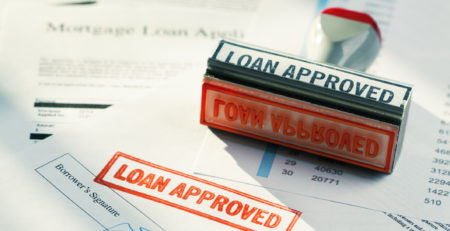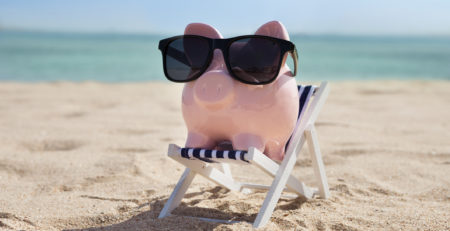8 Tips for Las Vegas Students Buying a Bike for College
Going to college in Las Vegas doesn’t necessarily mean that you have a car. In fact, in many cases having a compact motor bike is often more effective because you can both cross-campus quickly and park in tiny non-spaces even when every car-sized parking spot is full. Plus, it’s way more affordable than a car. So it’s no wonder that thousands of Uni students every year decide to buy electric or motor bikes to get around their college town.
Today, we’re here to share a few clever tips on what to consider and a few bases to cover when buying your first bike as a Uni student.
1. Motorcycle, Moped, or Electric Bicycle?
The first thing to consider is what kind of bike you want. Modern technology offers a surprisingly wide variety of compact motorized methods to get around. If you want moving power, rapid acceleration, and a gasoline engine then a motorcycle is the right answer. If you just need a faster-than-walking way to transport your books from one end of campus to the other, a moped or scooter might be ideal. And if you want to burn some calories while still topping 30 mph across your college town, a modern electric bike is the perfect solution.
Make your choice and begin shopping for the ideal make, model, and seller for your needs.
2. Measure Your Leg Length
Before you make any final decisions, remember that not all bikes are made to fit all people. By necessity, in fact, there are bikes for hugely tall people, for tiny short people, and for all the average sizes in between. You’ll need a bike that allows you to sit up above the wheels comfortably and lay your feet on the ground when stopped. While personally test-driving bikes will tell you a lot, you can also predict a bike’s fit by comparing its height to the length of your legs.
3. Watch Your Speed
When choosing your bike, look at the maximum speeds, with or without pedaling in the case of electric bikes. To toodle around town, it’s safer to choose a bike or scooter that tops out below fifty miles an hour. As long as you don’t need to go long distances and mostly plan to stay on campus, lower speed motorized bikes are a smart and cheap way to go. However, if you plan to take your bike onto highways and freeways or on road trips, you’ll want a motorcycle that can reach car-comparative speeds at the upper end. Some mopeds and dual-powered electric bikes split the difference.
4. Getting the Right License
Depending on the bike you choose, you may need a specific license from your state to drive it. Motorcycles require a motorcycle license and some mopeds and fast scooters also require a license. Usually, electric bikes do not need a license but bikes are getting faster and times are changing, so keep an eye on your local legislature. If you need to get a license, do this before you buy the bike if at all possible. This way, you’ll be able to ride your new bike home legally if you caught a ride to the shop.
5. Know Your Local Traffic Laws
If you’re going to be effectively a bicycle in the flow of traffic, it’s important to know how bicycles are treated in your town. Las Vegas traffic can be intense, especially closer to campus and city centers. Get familiar with the local traffic laws on bike lanes, bikes in normal lines, bikes on sidewalks, and powered bikes on park pathways. When you know the rules, you’ll know which bike-friendly shortcuts you can take and which ones you can’t without risk of any nickel-and-dime tickets. From there, learn the local drivers’ patterns. Not everyone follows the rules but you can learn the driving culture and how to avoid the most common outside-the-law hazards.
6. Wear and Store Protective Gear
Never ride faster than twenty miles an hour without protective gear, and in general always protect your head, knees, and elbows when going out on your bike. If you need to, put some effort into making your safe riding gear look cool with paint and bumper stickers. But wear it nonetheless. More often than we like to accept, bicyclists and motorcyclists get creamed by someone else’s carelessness. An unchecked left turn, someone backing out of a driveway, a door suddenly opening in your path. Protective gear can be the difference between life and death, so don’t laugh it off. Store your gear with your bike or by the door and have a plan for securing your gear, perhaps in a saddle bag or basket, when you get to your destination.
7. Always Carry a Bike Chain
You never know where you might have to park your bike, or if it will be safe to leave your bike unattended. Unlike a car, even a heavy bike can be picked up and loaded into a truck while you’re in the library or picking up some tacos. So always carry a locking bike chain, just in case. And lock up your bike any time you walk away from it in a public place. Be aware of what you lock your bike to. An unsecured bike rack may not hold your bike in place. Pick something bolted to the ground or a building that won’t shake free with force. The nicer your bike, the more important it will be to chain up wherever you go. We advise adding a contact info sticker to your handlebars just in case. Like pet tag.
8. You Can Get a Bike Loan
Bikes are a lot cheaper than cars, but they may still cost more than you can afford to spend all at once. Don’t worry. A private loan can help you finance the bike you need to make it enjoyably through Uni at a price and repayment rate you can afford. That way, you can start motoring your textbooks today instead of waiting until you’ve got the whole cost saved up.
For more information about how college students can get a bike loan before the semester is through, contact us today! Our financial professionals are always happy to help and to consult on the lending needs of local students.











